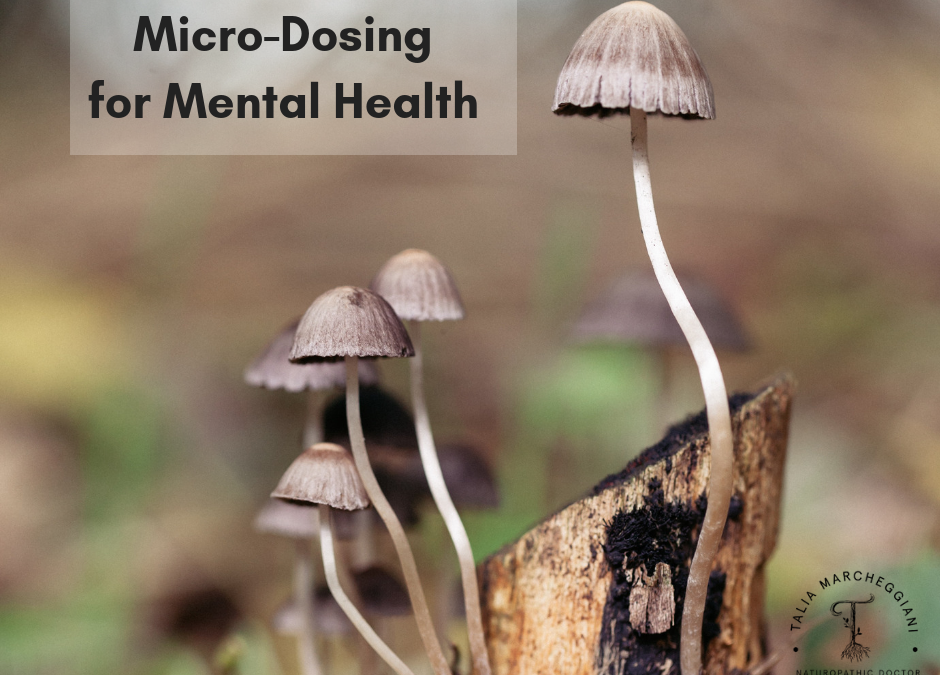
by Dr. Talia Marcheggiani, ND | Nov 15, 2018 | Addiction, Anxiety, Botanical Medicine, Depression, Emotional Wellness, Emotions, Health, Mental Health, Mind Body Medicine, Research
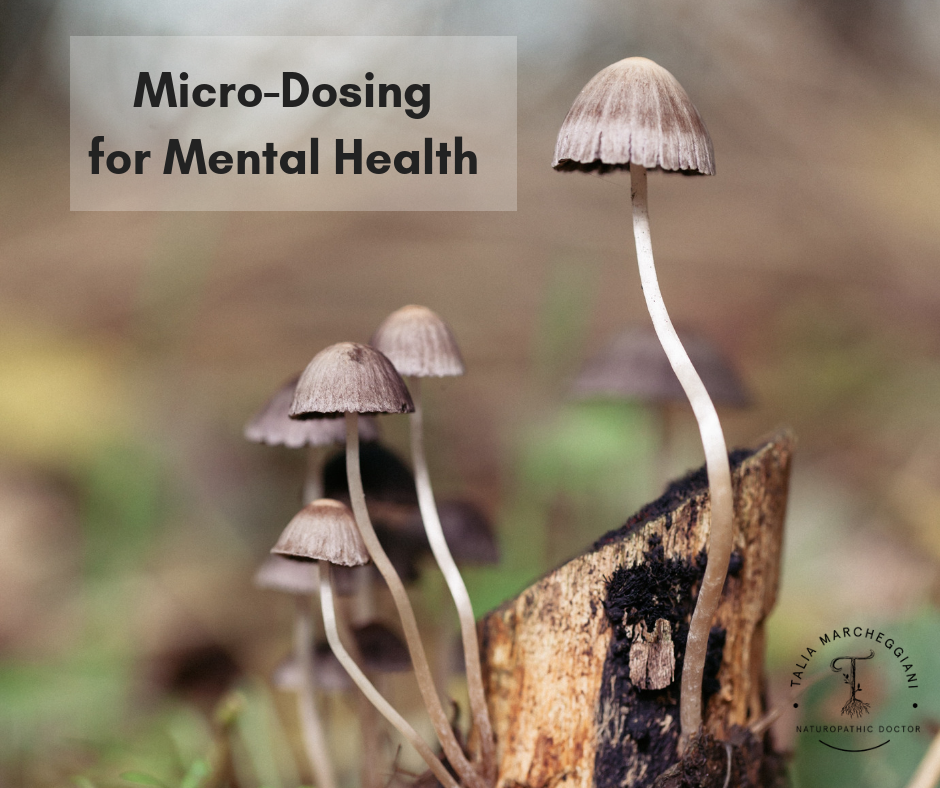 This article is for informational purposes only.
This article is for informational purposes only.
My friend Nelson (not his real name) was depressed.
Depression frequently came in and out of Nelson’s life, but this last bout was the worst.
Severe job stress compounded by issues with his relationship sent Nelson into a downward spiral, leaving him broken, sobbing and exhausted after engaging in the simplest of tasks.
Sadness and a feeling of doom rushed in to greet him at the end of each sleepless night. Nelson gained weight, despite never truly feeling hungry. His face appeared sunken and swollen. Despite sleeping 14 hours a day, dark circles hung under his eyes.
Since focusing and concentrating on work was impossible, he asked his psychiatrist to help him apply for mental health leave. Nelson was granted sick leave, as well as a prescription for Effexor, and a recommendation to get as much rest as possible.
After a year, Nelson felt worse. When rest and the medication weren’t working, he started exercising vigorously. He hired a nutritionist who cleaned up his diet, and he started taking fish oil and a B complex, among other supplements.
Even then, he still struggled. The hopelessness was still there. Returning to work at this point seemed impossible.
Nelson opened up to a friend about his struggles.
“I went through a similar thing a few years ago,” Nelson’s friend confessed. “And the thing that helped the most was micro-dosing.”
Micro-dosing, taking small doses of psychedelic substances, like LSD or psilocybin-containing “magic” mushrooms, entered the public consciousness in early 2015, after James Fadiman, PhD and author of The Psychedelic Explorer’s Guide, appeared on the Tim Ferris Podcast.
It involves taking a “sub-perceptual” dose of a hallucinogen, like LSD or Psilocybe cubensis “magic” mushrooms, that contain the hallucinogen psilocybin. A sub-perceptual dose means that, while these substances still exert effects, they don’t produce a noticeable hallucinogenic “high”.
According to Paul Austin at the The Third Wave, people micro-dose for two main reasons: to remove negative mood states, such as depression, anxiety, PTSD, addiction, and ADD; and to increase positive mood states such as flow, creativity, improved productivity and focus, and sociability.
Micro-dosing has been used experimentally in individuals trying to quit smoking and to heal depression.
After listening to the podcast and reading some of the articles his friend sent him, Nelson managed to obtain capsules containing 200 mg of dried psilocybin mushrooms. Procuring these substances is still illegal, but Nelson figured he had nothing to lose.
When I caught up with Nelson, he was already a few weeks into his micro-dosing regimen. I asked him how he was doing.
“I’m actually feeling better than I have in months,” he told me, smiling. “I’m not passing out on the couch anymore. I wake up at 7 every morning without an alarm. I feel optimistic for the first time in months. And it seems to be consistent!
“This week I’ve managed to attend three social events and I seem… more motivated. My workout game improved too. Also, I’m not sure I’m ready to go back to work just yet but I’ve noticed my motivation has picked up. So much so that I’ve started taking free programming courses online. I—I can’t really believe it.”
Research on Psychedelics for Depression
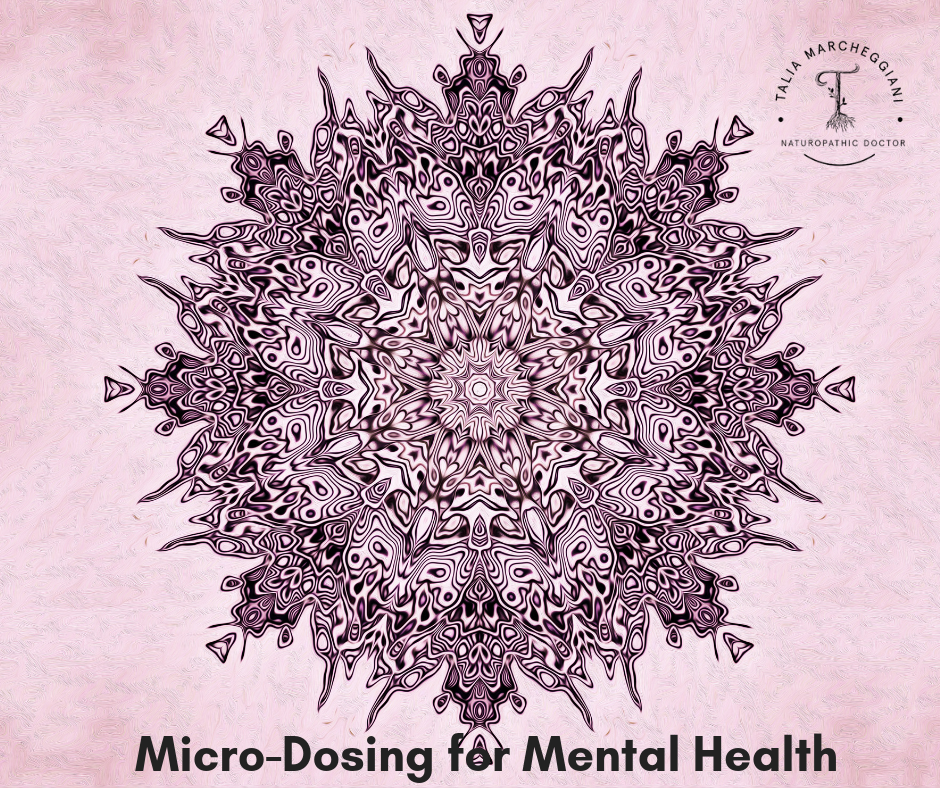 Unfortunately, we can’t draw any sound conclusions from Nelson’s experience; scientific data from randomized control studies is still lacking. However, the growing collection of anecdotes on the benefits of micro-dosing for mental health and well-being has caught the attention of researchers.
Unfortunately, we can’t draw any sound conclusions from Nelson’s experience; scientific data from randomized control studies is still lacking. However, the growing collection of anecdotes on the benefits of micro-dosing for mental health and well-being has caught the attention of researchers.
Thomas Anderson, a PhD candidate at the University of Toronto, polled almost one thousand participants on social media channels and message boards, like Reddit, to gather some initial data on the benefits and drawbacks of micro-dosing hallucinogens.
The micro-dosers that Anderson and his team polled reported higher levels of creativity, and improved mood and focus. They claimed to notice a reduction in depression and anxiety symptoms, increased motivation to eat right and exercise, cognitive enhancement, improved self-efficacy and heightened social functioning.
They reported that the main drawback they experienced was obtaining these substances, which are currently illegal in The US and Canada.
Although interesting, this self-reported data isn’t hard science. To increase objectivity, Anderson and his team presented the participants with tests of creativity (finding out how many uses they could find for common objects, for instance) and questionnaires that measured wisdom. The micro-dosers scored high on both these metrics. They also scored lower in tests that measured negative emotion.
Anderson and his colleagues plan to publish these preliminary findings in a series of papers. They are currently in the process of obtaining Health Canada approval for a controlled study.
Psychedelic research was terminated in the 1960’s, leaving a massive knowledge gap of their therapeutic potential. But now, with the publication of Fadiman’s Psychedelic Explorer’s Guide and Michael Pollen’s even more recent How to Change Your Mind, psychedelics are receiving a fresh surge of interest, particularly for their mental health benefits.
One of the prominent names in this new-wave research community is Robin Carhart-Harris, PhD, at Imperial College London, who is investigating psilocybin as a treatment for severe depression.
Published in a 2016 issue of Lancet Psychiatry, Carhart-Harris administered two doses (one small and one moderate) of psilocybin, spaced one week apart, to twelve patients with Major Depressive Disorder. The doses were administered in a controlled, therapeutic setting, and symptoms were rated immediately after therapy, and then again at one and three months.
The study results were remarkable. Five of the twelve patients dropped from “severe depression” to “no depression” immediately after receiving the second dose. All of the study participants experienced an overall reduction in symptoms with five of the study participants remaining depression-free after three months.
Roland Griffiths, Phd, at John Hopkins, is involved in a number of studies examining psilocybin’s ability to induce mystical experiences in terminally ill patients.
In a 2016 randomized, double-blind, placebo-controlled crossover trial published in the Journal of Psychopharmacology, he and his team found that administering high-dose psilocybin to terminally ill cancer patients increased mood, quality of life and optimism, and decreased death anxiety. These benefits were sustained at the six month follow-up. Over 80% of the study participants claimed to experience greater life satisfaction and feelings of well-being.
How Psychedelics Work to Boost Mood
LSD, psilocybin, and other psychedelics, work like serotonin in the brain by acting on serotonin receptors, specifically the 5HT2A serotonin receptors.
Like psychedelics, anti-depressant medications, like SSRI and SNRI medications (Selective Serotonin and Selective Serotonin and Norepinephrine Re-uptake Inhibitors), Cipralex and Effexor, respectively, also work on serotonin pathways. However, these medications’ effects are limited: some people improve on them, while others feel no different, or even worse.
SSRI and SNRI medications activate 5HT1A receptors. According to Carhart-Harris, this makes a difference. In his paper on the “Bipartite Model of Serotonin Signalling” he proposes that these receptor pathways help people cope differently.
5HT1A receptors, acted on by anti-depressants, help with “Passive Coping”. They help individuals with depression tolerate the stress in their lives, be it a toxic work environment or destructive relationship—nothing has changed about the situation, you can just deal with it better.
Psychedelic stimulation of 5HT2A receptors activate pathways involved in “Active Coping”: identifying and directly addressing sources of stress. Active coping might mean asserting boundaries at work or applying to new jobs. It might look like ending an unhealthy relationship.
In other words, 5HT2A receptors stimulate neural pathways that reveal previously elusive solutions to problems. They do this by increasing a chemical called Brain-Derived Neurotropic Factor, or BDNF.
BDNF promotes the growth of new brain cells and neural pathways in the brain. These processes, called “neurogenesis” and “neuroplasticity” , are essential for learning, creativity and memory. Research shows that increased neuronal plasticity benefits mood.
Psychedelics also work by disconnecting the brain’s Default Mode Network. The Default Mode Network, or DMN, connects frontal areas of the brain, such as the Medial Prefrontal Cortex, with lower brain areas like the Posterior Cingulate Cortex.
When we’re daydreaming, stuck in traffic, sitting in a waiting room, or otherwise not actively engaged in a mental task, our DMN lights up. In these quiet moments, we lapse into a state of reflection and self-referential thinking. In other words, our minds wander.
If we’re in a good mood, this mind-wandering creates narratives, daydreams and fantasies about the future. If we’re depressed, it leads to rumination, negative over-thinking, and self-criticism, which worsens mood.
Disrupting the DMN allows old thought patterns to fall away, opening up novel possibilities.
Activating Flow States
Shutting off the DMN can help us enter a state of Flow. Flow states occur when we are completely immersed in an activity so worthwhile that our sense of time and self cease. When in flow, we toe the limits of our talents, making these states incredibly rewarding and enriching. They are the antithesis to depressive and anxious mood states.
Psychedelic substances, along with other practices like meditation, help put us in a state of flow. These states are characterized by elevated levels of serotonin and dopamine and calming and focussing alpha brain wave oscillations. When in them, we become capable of incredible things.
In The Psychedelic Explorer’s Guide, James Fadiman writes about “Clifford”, a premed student. Clifford shares,
“I was taking a biology course to prepare for medical school, and we were studying the development of the chick embryo…I realized that in order to stay alert, a tiny dose of LSD could be useful.
“With that in mind, I licked a small, but very potent, tablet emblazoned with the peace sign before every class. This produced a barely noticeable brightening of colours and created a generalized fascination with the course and my professor, who was otherwise uninteresting to me.”
Due to some health issues, Clifford ends up missing the final exam. His professor agrees to a make-up. Before the exam, Clifford pops the rest of the now-tiny LSD tablet into his mouth.
The make-up exam consists of drawing the complete development of the chick from fertilization to hatching—the entire course.
“As I sat there despondently, I closed my eyes and was flooded with grief. Then I noticed that my inner visual field was undulating like a blanket that was being shaken at one end. I began to see a movie of fertilization!
“To my utter amazement, I was able to carefully and completely replicate the content of the entire course, drawing after drawing, like the frames of animation that I was seeing as a completed film!
“It took me an hour and a quarter drawing as fast as I could to reproduce the twenty-one-day miracle of chick formation. Clearly impressed, my now suddenly lovely professor smiled and said, ‘Well, I suppose you deserve an A!’ …the gentle wonder of life was everywhere.”
While impressive, Clifford’s account, like Nelson’s, is merely an anecdote. Far more research is warranted.
Micro-Dosing for Mood
Micro-dosing allows individuals to tap into the 5HT2A receptor-stimulating, BDNF-increasing, DMN-uncoupling, and flow state activating benefits of psychedelics, without the mind-stabilizing effects.
At a sub-perceptual doses there are no weird colours and visuals, alternate realities, or ego deaths. Micro-dosers report that the world merely appears brighter, or that they feel “sparklier”—they experience greater well-being. Otherwise, they can proceed with their lives normally.
Fadiman’s micro-dosing protocol consists of taking a tenth of a full dose, about 10 to 20 mcg of LSD, or 200 to 500 mg of dried-weight psilocybin mushrooms, every three days. This means that if the first dose is taken on Monday (Day 1), then the second dose is taken on Thursday (Day 4). According to Fadiman, spacing doses avoids tolerance, keeping the doses effective.
Participants are encouraged to engage in their daily activities: working, eating, sleeping and exercising normally.
Fadiman recommends participants keep a record of mood, cognition, motivation and productivity. People often report that they feel the best on Day 2, the day after taking a micro-dose.
Drawbacks to Micro-Dosing
In my role as a naturopathic doctor, I can’t recommend or counsel on the use of psychedelic substances for the treatment of any health condition. While the scientific interest in their use as therapeutic agents is growing, these substances are illegal to obtain and possess, and there is a lack of solid research on their safety and efficacy.
As of right now, the only way to legally access psychedelic therapies is through research. MAPS, the Multidisciplinary Association for Psychedelic Studies, often lists recruitment opportunities for ongoing studies. Thomas Anderson, at the University of Toronto, is in the stages of obtaining Health Canada approval for a randomized control trial on the benefits of micro-dosing in healthy volunteers.
Like all therapies, there are risks to taking these substances, even at low doses. While LSD and psilocybin confer a low risk for addiction and are ten times less harmful than alcohol (the harm scores of LSD and psilocybin are 7 and 5, respectively, compared to 72 for alcohol), they are not completely benign.
Psychedelics can aggravate schizophrenia, psychosis, dissociation, severe anxiety, and panic. They can also interact with medications and supplements that act on serotonin pathways. Their effects at high doses can be disorienting and oftentimes unpleasant: in the studies that showed positive benefit, they were administered under careful supervision, in a therapeutic set and setting.
Our society’s mental health is in crisis. As a clinician who focuses on mental health, I am always excited to learn of new therapies that have the potential to heal mood. With Canada’s 2018 legalization of cannabis, gateways are opening for future uses of psychedelics as medicine. Perhaps with more research and advocacy, we’ll one day see micro-dosing of psychedelic substances as a safe and effective mainstay therapy for promoting mental and emotional well-being.
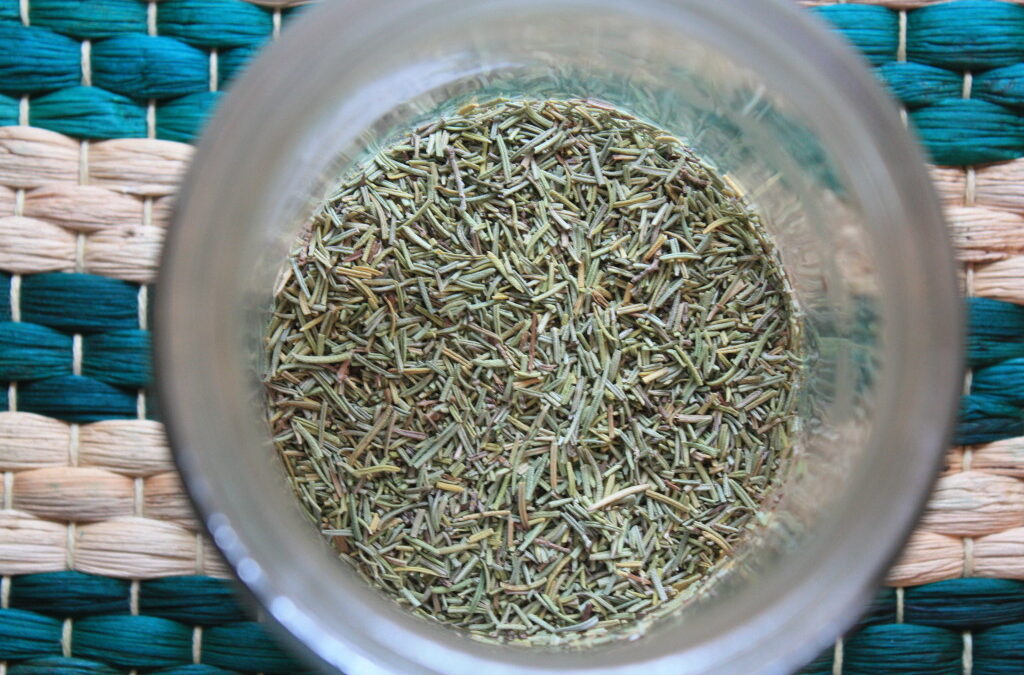
by Dr. Talia Marcheggiani, ND | Aug 25, 2015 | Botanical Medicine, Cold and Flu Remedies, Detoxification, Digestion, DIY, Fertility, Herbalism, Hormones, Medicine, Mental Health, Mind Body Medicine, Recipes, Skin health, Women's health
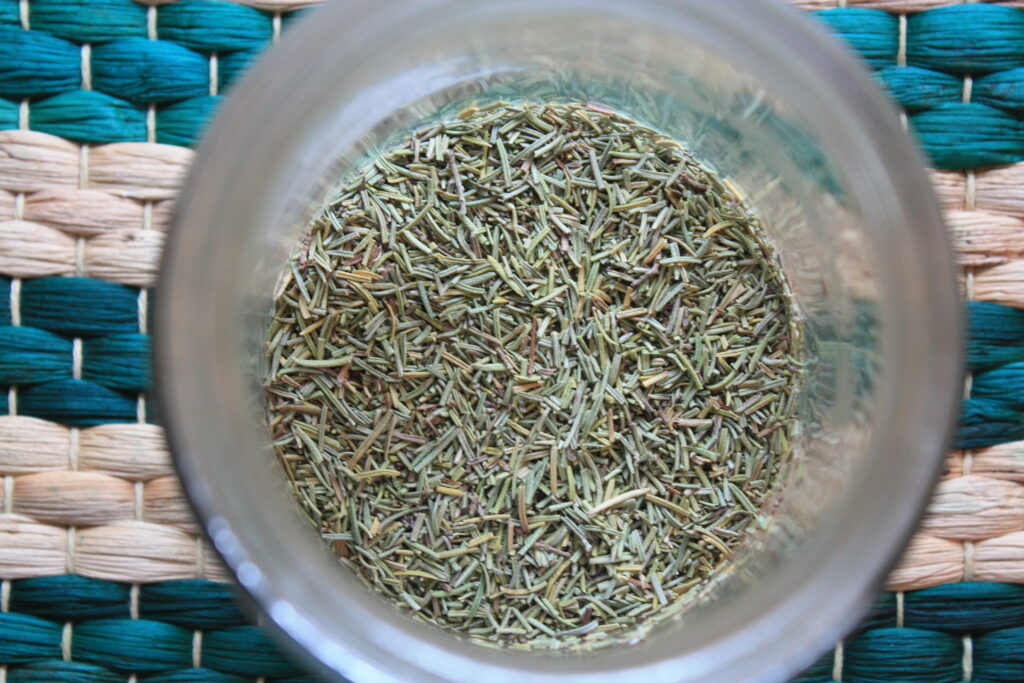
As a student of naturopathic medicine, I didn’t quite get herbs. They were natural, sure, but why would I prescribe them in lieu of homeopathy, dietary changes or nutritional supplements? I didn’t get it.
I liked herbs; I understood the idea of synergy—the fact that the effect of the entire plant is greater than the sum of its parts. Also, I knew that plants often have superior effects to some drugs in that they often contain active ingredients that balance the side effects otherwise caused by most pharmaceutical medications. For example, anti-inflammatory herbs like turmeric and licorice root also support and strengthen the immune system, rather than suppress it, as most anti-inflammatory drugs tend to do. For most drugs that lower inflammation, a common side effect is severe immune deficiency. This is not the case for herbs that lower inflammation, which actually benefit the immune system. So, I knew herbs were cool.
I also liked the idea that each tincture was individually created for the totality of symptoms a patient presented with. Creating a specific medicine for each individual seemed to fit with the idea of singularity in medicine, which I resonated with. However, for a long time I didn’t get herbs. And I’ve often been reluctant to prescribe herbs in my practice.
First of all, I don’t have my own dispensary so sending patients off to buy tinctures created a kind of disconnection from the source of my prescriptions. Secondly, as many of you who have tried it can contest, tinctures (or herbs extracted in alcohol) taste terrible and make compliance hard, even for myself. Thirdly, tinctures are quite expensive. Each 50 ml of tincture can cost upwards of $5 making a month’s supply of herbs quite costly. This is funny because many of the herbs that are so costly to buy grow like weeds in southern Ontario (dandelion, for example, is often considered a weed) and tinctures aren’t that difficult to make. Fourthly, I didn’t like to prescribe tinctures because, as I understood it, people would only feel better while actively taking the herb. In my mind, the herb worked like a drug in that once you stopped taking it, the positive effects would diminish. This differed from my understanding of homeopathy, which stimulates the body to heal itself, correcting nutritional deficiencies or looking for and treating the root cause of symptoms. I doubted whether the way we were taught to prescribe herbs did in fact treat the root cause. This is important because the guiding principles of naturopathic medicine dictate that we aim to do this whenever possible.
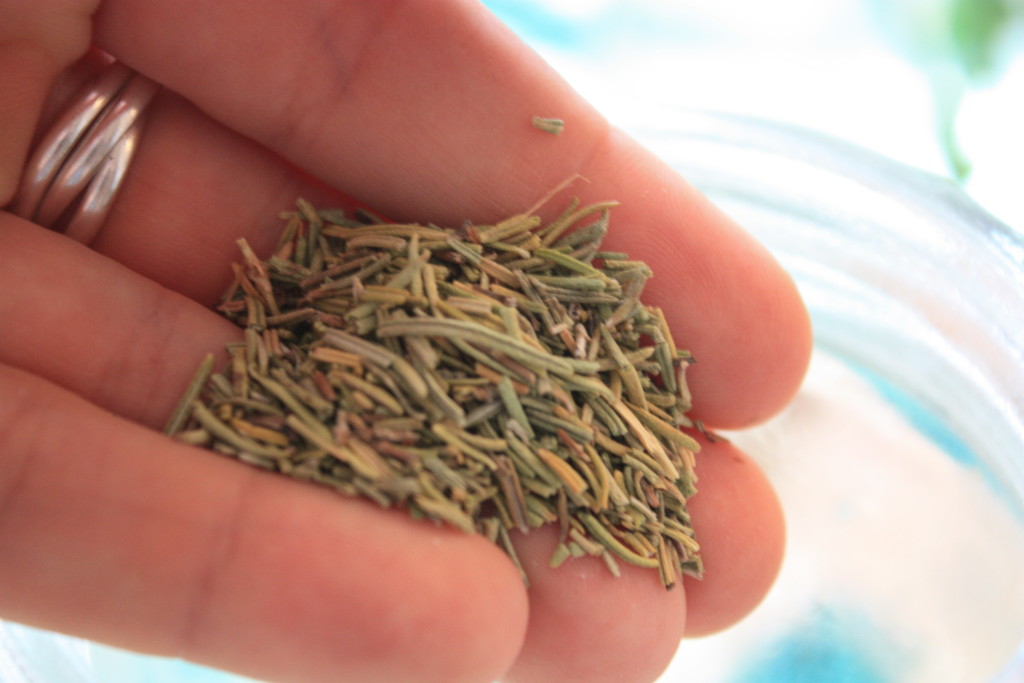
I had no doubt, however, that herbs were effective. Taking a tincture seemed to be far more effective for me and the patients I treat than taking supplements. Herbs are nutritional—they are a food and a medicine and therefore contain a myriad of health benefits beyond treating what they are prescribed to treat.
It wasn’t until I read author and herbalist Matthew Wood’s works on herbalism that I began to internalize the idea that herbs do in fact stimulate the body to heal itself. Plants contain an inherent wisdom, according to Wood and his studies in western and Native American herbalism. Plants eradicate disease by stimulating the healing powers of the body and strengthening the body’s capacity to heal itself from disease. The body is constantly trying to heal itself from ailments and, when these processes become blocked for one reason or another, disease symptoms begin to manifest. Herbs can strengthen the body’s healing processes, when prescribed in a certain way, and large doses for long courses of time are not necessary. Further, once the disease is eradicated, the herbs can be stopped. When prescribed as a healing catalyst, disease doesn’t return once the herbal prescriptions have done their work.
Wood writes, “It should be understood that herbs can be used either way: to stimulate the self-healing powers of the organism to return to health, or to artificially manipulate the organism to fit an artificial goal.” He uses the examples of goldenseal, which at high doses can kill bacteria or viruses that have invaded the body and in smaller doses can increase the mucosa and digestive systems of the body to rid itself of the invaders and, in turn, strengthen the body against future invasions.
In regards to the cost of herbal tinctures, there are relatively simple ways to get the effects of herbs by making your own tinctures.
Read on to support liver detox, hormonal health and cardiovascular health by creating your own rosemary tincture using dried rosemary, one of my favourite herbs of the moment, and a bottle of white wine:
Rosmarinus officinalis, is the latin name for rosemary, a member of the mint family. While better known for its ability to perfectly complement roast chicken, it has a number of health benefits. Rosemary’s energetic actions are stimulating and warming, according to Matthew Wood. It clears up phlegm and dampness, stagnation and sluggishness in the tissues.
Rosemary has the ability to boost metabolism and increase the absorption of sugars and fats, which make it an appropriate nutritional supplement for people with diabetes. It can help drive glucose into the cells, diminishing the need for the body to release large amounts of insulin, re-sensitizing cells to insulin and lowering blood sugar. It can help nourish the entire body and has a special affinity for the heart, lungs, spleen, liver and kidneys.
Rosemary is currently often used to detoxify toxic, exogenous estrogens from the body while promoting the conversion of health-promoting estrogens in the liver. It is a powerful stimulator of liver detoxification. It therefore serves as a cheap and useful remedy for seasonal, full-body detoxes or coming off oral contraceptive or synthetic hormones, such as the fertility drugs given before IVF treatments. It is also useful for promoting circulation and lymphatic drainage, moving sluggishness and excess weight and creating warmth and vitality in the body’s circulatory systems.
Herbalists use rosemary tincture or oil applied topically to the head and neck to treat migraines from tense shoulder and neck muscles. Its scent is aromatic and stimulating and can improve memory and cognition. It is an effective remedy for mental-emotional depression when taken internally, especially where patients feel damp, sluggish, lack motivation and experience feelings of mental dullness.
As a digestive aid, rosemary can help relieve abdominal bloating and flatulence. It also helps stimulates appetite. It helps burn up phlegm in the stomach and can aid in weight loss.
In addition, rosemary contains antimicrobial properties, meaning it can be used to kill bacterial and viral infections, especially when taken at the beginning of a cold.
It is a powerful heart tonic, especially where there is edema and circulatory stagnation, such as early signs of congestive heart failure. It also can help with arthritic pains and joint stiffness when applied topically to joints or taken internally as an anti-inflammatory.
In Matthew Wood’s book, The Practice of Traditional Western Herbalism, he recommends creating a rosemary infusion (infuse fresh leaves and flowers in a pot of boiled water and keep covered) or a tincture using white wine as the alcohol base.
A few days into taking this tincture (mixed with a little water to dilute the strong taste), I’ve noticed my skin clear, my digestion improve, my stomach flatten (I no longer have any bloating and I’ve been experimenting with eating wheat again for the first time in years), and my energy increase. My symptoms of PMS this month subsided before my period even came. I had a canker sore in my mouth that immediately went away once I started taking rosemary wine. I’ll certainly be adding this cheap and effective DIY remedy to my self-care and general health-promoting regime.
Here’s how to make your own.
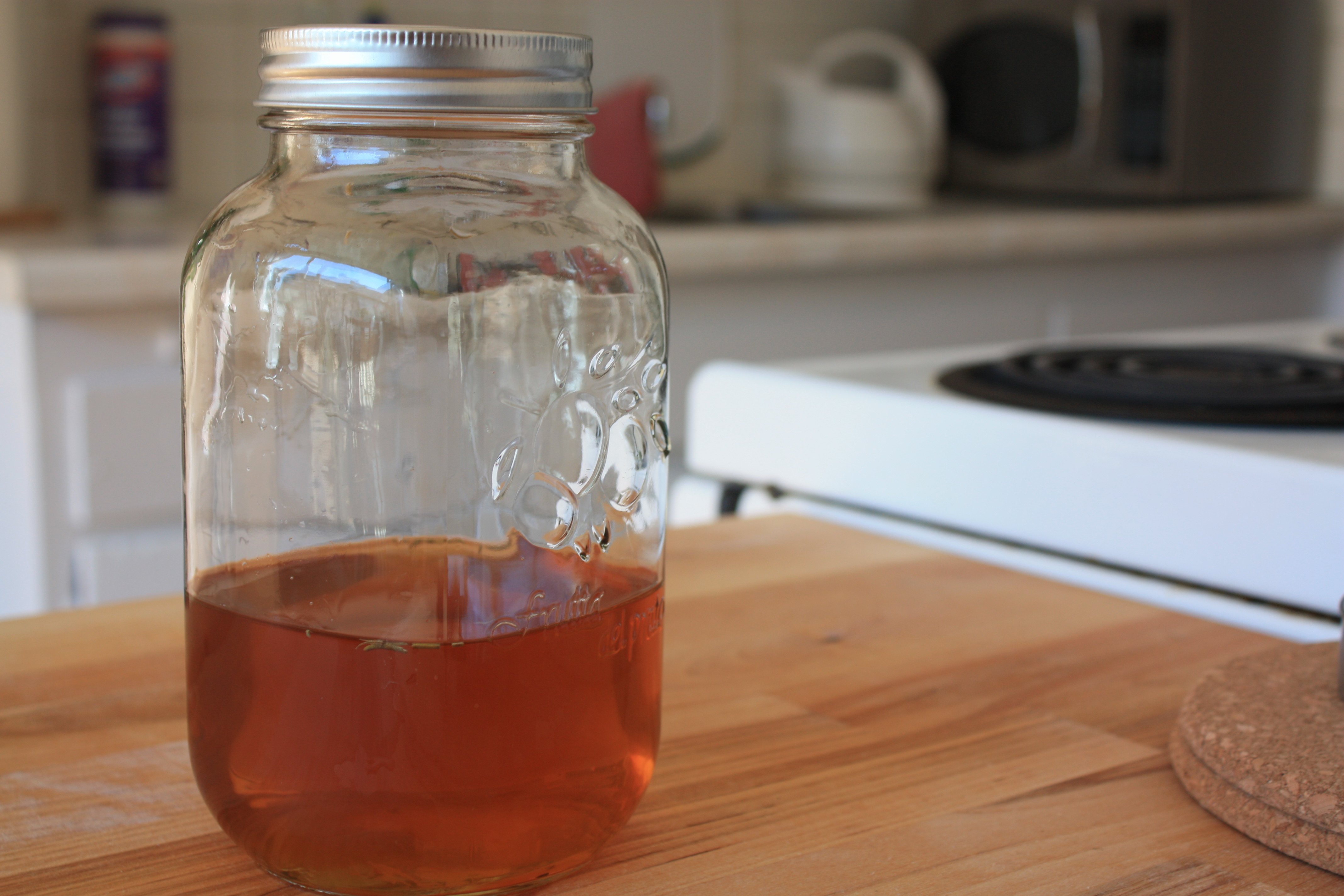
Rosemary Wine:
Ingredients:
1 handful (approximately 250 ml) of rosemary leaves, dried, cut up as small as possible (you can use a packet of rosemary spice from the grocery store). Extra points for organic.
1 bottle (750 ml) of white wine (Wood recommends a good quality wine, I used a cheap homemade one I was given as a gift).
1 empty glass bottle/jar
Directions:
Put rosemary in the empty glass jar. Pour entire 750 ml bottle of white wine over rosemary and let stand in a cool, dry place for 2-3 days. Then strain out the herbs and store the liquid tincture in a cool, dry, dark place, like a cupboard.
Talk to your naturopathic doctor about appropriate dosing, though most botanical prescriptions involve 1 tsp of tincture 2-3 times a day away from food. This will vary according to your health challenges and health goals, among many other factors.*
Reference:
Wood, Matthew. 2004. The Practice of Traditional Western Herbalism: Basic doctrine, energetics and classification. Berkeley, California: North Atlantic Books.
*This article is not to be confused with medical advice from a licensed naturopathic doctor. If you suffer from one of the above-mentioned conditions and believe rosemary might help, please book an appointment to receive an appropriate assessment.
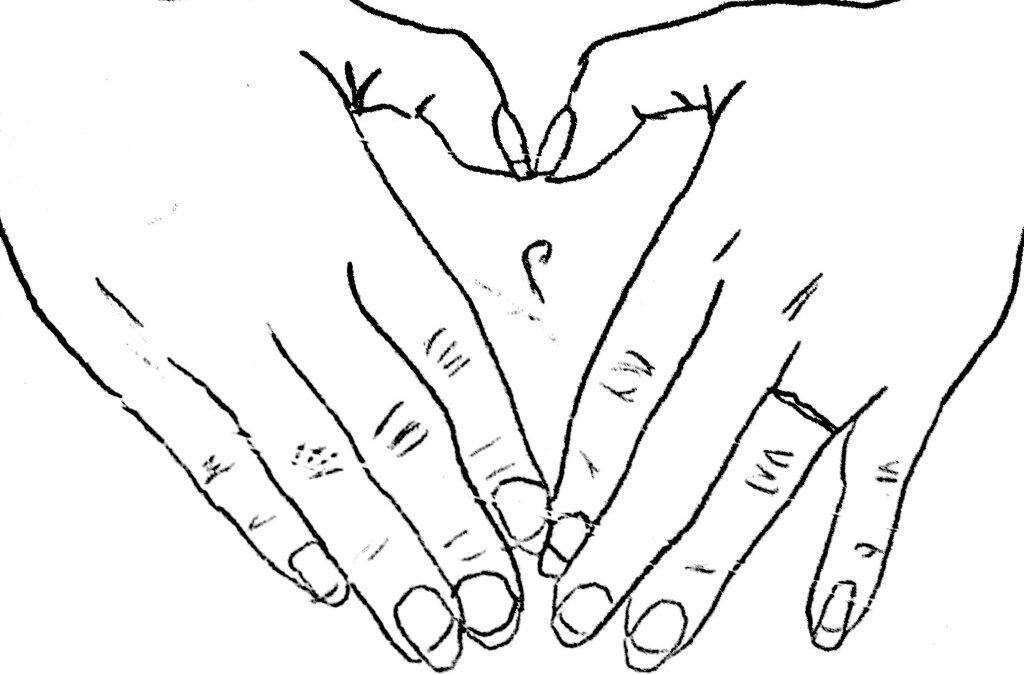
by Dr. Talia Marcheggiani, ND | Aug 1, 2015 | Botanical Medicine, Detoxification, Diet, Digestion, Education, Food, Health, Home Remedies, Letting Go, Self-care, Weight Loss
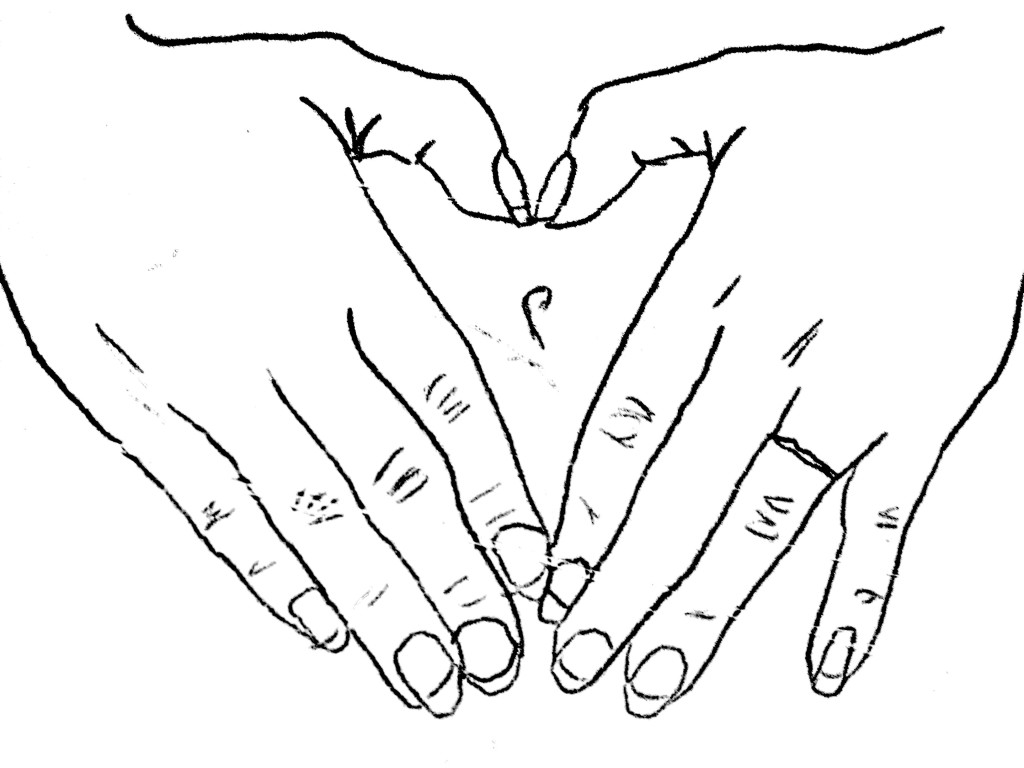 I feel sorry for the digestive tracts of this nation, I really do. The owners of these digestive tracts have my sympathy as well—there really is nothing so bad as pooping too much or not pooping enough. Sometimes it’s hard to know which one is worse. Having regular and healthy bowel movements (1-3 times a day) is an essential foundation of good health—regular elimination helps us remove toxins and waste from the body, keeping us energized and well.
I feel sorry for the digestive tracts of this nation, I really do. The owners of these digestive tracts have my sympathy as well—there really is nothing so bad as pooping too much or not pooping enough. Sometimes it’s hard to know which one is worse. Having regular and healthy bowel movements (1-3 times a day) is an essential foundation of good health—regular elimination helps us remove toxins and waste from the body, keeping us energized and well.
A series of patients often come through my office with chronic constipation that is unrelieved by supplements and diet. Most people are getting enough fruits and vegetables or have added more of these foods to their diets and still have a hard time keeping things moving in the lower abdominal quadrants. Since promoting healthy motility is often about daily self-care practices, I’ve complied my list of constipation home-care protocols here, for easy reference. While there are herbs and supplements that can improve motility, add fibre and draw water into the colon and promote healthy elimination, there are also foundational daily practices that must be incorporated as well.
Water:
A no-brainer: we all know that if stools are dry and hard to pass, we need to increase the lubrication of the digestive tract. Gradually increasing your fluid intake by one glass (250 ml) of water per day per week will help your body adjust so that you’re not sent running to the washroom every ten minutes.
Most importantly, however, I like to tell my patients to start the day with a large glass (500 ml) of room temperature water, consumed at once, first thing in the morning. This stimulates the gastrocolic reflex, by filling the stomach with water. In a healthy digestive tract, the contents of the intestine should move through the gut and enter the colon over night where they await the morning meal. Stimulating digestion by ingesting a modest amount of water first thing in the morning can stimulate the contraction of the colon and encourage a bowel movement. Keeping water warm or at room temperature, rather than cold, prevents the water from seizing up the body’s sphincters and allows things to keep moving. This practice also guarantees half a litre of water consumption a day, which we know is essential for proper colon health.
Listening to the body:
Slow motility is often a response to lifestyle. Our bodies send gentle cues to our conscious brains that it’s time to have a bowel movement and oftentimes these cues are ignored. Perhaps we’re in traffic, or rushing out the door, or in a meeting. Perhaps we’re afraid to use the washroom at work, where the acoustics are less-than-ideal. However, when we ignore the calls of nature, we often miss our chance to have a bowel movement for that day. If this has become a reality for you, some bowel retraining might be in order. Bowel retraining involves picking a time of day when it would be most convenient to have a bowel movement—right after breakfast is often a good time—and sitting on the toilet for 10 to 20 minutes. This daily practice will help teach your bowels when a good time to go is, as well as make you conscious of making daily elimination a priority. Think of it as “potty training” for adults.
Fibre:
We all know that regular bowel movements require an adequate amount of dietary fibre. Fibre creates bulk in the intestines, feeds healthy gut bacteria and increases stool weight. A healthy diet contains at least 25 grams of fibre a day from whole food sources. However, when it comes to constipation, not all fibres are created equally. While soluble fibre, from things like chia seeds, oats and legumes has been shown to decrease cholesterol absorption in the gut, it can actually serve to bung us up more. Insoluble fibre, like the kind found in apple skins, flax and wheat bran, can help bulk up the stools and keep things moving smoothly along the digestive tract.
To increase insoluble fibre in the diet, I recommend 2 tbs of ground flaxseed (you can add it to smoothies, morning cereal or the morning 500 ml glass of water) a day. This not only helps promote bowel movements, it also provides healthy omega 3 fats and estrogen-balancing properties for healthy hormones.
As fibre needs to absorb water in order to promote healthy excretion, it is important to prioritize fluid intake. A study involving 63 participants showed that the more fibre they consumed, the more constipated they became. The researchers likened this phenomenon to a traffic jam—add more cars and you simply worsen the traffic jam. Therefore, it’s important to keep the gut sufficiently lubricated to encourage proper motility.
Castor oil packs and self-massage:
Castor oil can help promote smooth muscle motility when applied topically to the abdomen. I instruct patients to massage a liberal amount of oil over the entire abdomen (bra-line to underwear line) and either place a hot water bottle over the area for one hour or leave the oil on overnight. Self-massage paired with castor oil are effective at helping things move more regularly throughout the night. A word of caution, however: castor oil should not be used in pregnancy and before an expected menstrual period as it can stimulate the contraction of the uterus. Castor oil also has the potential to stain clothes and bedsheets, so take extra care.
Pelvic tilt:
A few years ago, the Squatty Potty was all the rage. This new, rather expensive tool, claimed to change the angle that the legs make with the torso, encouraging pelvic floor muscle relaxation and relaxation of the muscles around the anal sphincter. The principles makes sense—we humans have evolved to evacuate our bowels in a squatting position. This increases abdominal pressure and causes puborectalis muscle relaxation, allowing us to have a strain-free experience. The modern toilet, however, does not encourage this angle, which the makers of Squatty Potty claim is the reason that constipation issues are so rampant in Western society. I encourage purchasing a 1-ft high washroom stool to place under the feet while going to the washroom to promote proper posture and sphincter opening.
Exercise:
Daily exercise promotes bowel movements by increasing metabolism, increasing intra-abdominal pressure and strengthening abdominal muscles. Getting 30 minutes of moderate exercise (walking, swimming, cycling, etc.) and performing squats are excellent ways of promoting healthy elimination.
Talk to your naturopathic doctor:
Supplements such as magnesium, vitamin C, probiotics and certain herbs such as burdock, peppermint, chamomile and chicory can also help with constipation. Talk to your naturopathic doctor about what doses, brands and supplements are right for you. Acupuncture and hydrotherapy are also useful treatments. Try to avoid methods that only offer temporary relief from constipation, such as laxative use. These can help in the short term, but like most short-term treatments, can worsen symptoms in the long term and further exacerbate your efforts to promote healthy bowel movements over time.
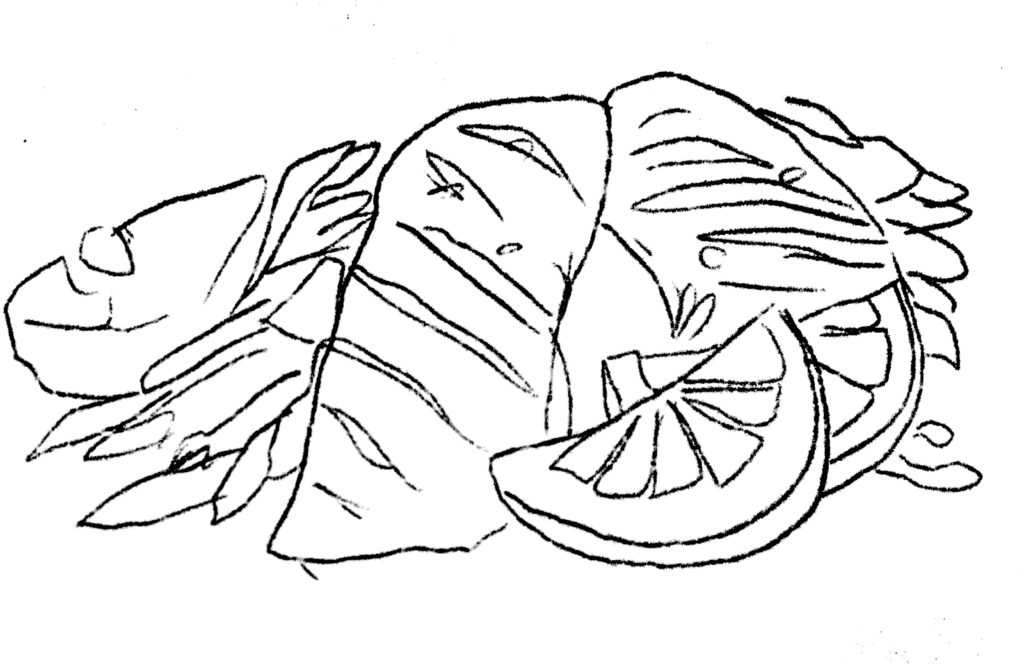
by Dr. Talia Marcheggiani, ND | Apr 21, 2015 | Botanical Medicine, cancer, Detoxification, Diet, Endocrinology, Fertility, Food, Health, Mental Health, Nutrition, Skin health, Weight Loss, Women's health
 Estrogen is the dominant female hormone. It is actually a group of hormones, called the estrogens, that are responsible for the development of female secondary sex characteristics: the development of breast tissue and the proliferation of the uterine lining. Estrogen helps prepare the body for ovulation. Not all estrogens are created equal, however. Some estrogens are associated with an increased risk of certain female cancers, such as breast cancer.
Estrogen is the dominant female hormone. It is actually a group of hormones, called the estrogens, that are responsible for the development of female secondary sex characteristics: the development of breast tissue and the proliferation of the uterine lining. Estrogen helps prepare the body for ovulation. Not all estrogens are created equal, however. Some estrogens are associated with an increased risk of certain female cancers, such as breast cancer.
Excess estrogen, especially in the form of these so-called “bad” estrogens, seems to be a common theme among women in North America. Stress, caffeine intake, synthetic estrogens in birth control pills and hormone replacement therapy and xeno-estrogens from cleaning products, plastics and cosmetics are among some of the causes of excess levels of estrogen in the body. Because of these environmental factors, many women suffer from something called “Estrogen Dominance”.
Symptoms of estrogen dominance include stubborn weight gain, anxiety, premenstrual symptoms of breast tenderness, acne, irritability, fatigue and brain fog. Estrogen dominance can contribute to worsening of health conditions such as infertility, fibrocystic breasts, repeated miscarriages, uterine fibroids and endometriosis as well as increase the risk of developing certain cancers.
Estrogen detoxification can be done effectively through a healthy diet that aims at improving estrogen clearance in the liver and regulation of the action of estrogen at cell receptors. By following this diet, patients can experience an improvement in hormonal health conditions, clearer skin and weight loss.
This diet is adapted from Dr. Joseph Collins RN, ND at yourhormones.com.
Cruciferous vegetables: Vegetables from the cabbage family, such as cabbage itself, cauliflower, broccoli, brussel sprouts, kale, bok choy, spinach, collard greens and other leafy greens are rich in a nutrient called indole-3-carbinol, or I3C. I3C gets converted to diindolymethane (DIM) in the body, which is responsible for clearance of excess estrogens in the liver. Consume a minimum of 3-4 servings of these vegetables per week.
Rosemary: Rosemary, when added to meats as a seasoning enhances the formation of good estrogens (the ones less likely to cause cancer or health concerns). Rosemary has the added benefit of antioxidant activity. It also enhances memory and mood and helps with thyroid function, improving weight loss, metabolism and energy levels.
Flaxseed: 2-4 tablespoons per day of ground flaxseed promotes healthy estrogen metabolism. The seed contains lignans, which help clear excess estrogens from the body. Flax also contains phytoestrogens, which control how much estrogen can bind to estrogen receptors. This means it can decrease excess estrogen activity or increase deficient estrogen activity, making it an effective remedy for a variety of female health complaints. Flax is rich in healthy omega-3 fats and contains fibre, making it an important remedy for treating inflammation and constipation. Flaxseed is digested and absorbed when ground, and best stored in the fridge as the oils in the seed quickly go rancid at room temperature.
Salmon and other fatty fish: Salmon and other fatty fish contain EPA, an omega-3 fatty acid, is an important anti-inflammatory oil. It has been shown to be effective in treating inflammatory conditions, cardiovascular disease and mental health conditions, such as depression, anxiety and ADHD. It helps increase the formation of “good” estrogens in the body. Enjoy 2-3 servings of fatty fish per week, or supplement with a quality fish oil.
Isoflavones: Isoflavones, such as those found in soy, are antioxidants effective at increasing good estrogens in the body. Since soy is often heavily processed, using herbs such as Trifolium pratense, Pueraria montana and Pueraria lobata either in teas, capsules or tinctures, will help provide an adequate dose of isoflavones.
Activated folic acid: Folic acid is responsible for converting estrogen into a very healthy, methylated form that can decrease the risk of certain cancers. Many people are unable to convert folate into the active 5-methyltetrahydrofolate, which is essential for hormone metabolism, DNA synthesis, homocysteine metabolism and nervous system function (good mental health, memory and energy). Other B vitamins to supplement with are B6 and B12 as they help folic acid metabolism estrogen into their anti-cancer form. Folic acid is found in dark leafy greens, which also contain your daily doses of indole-3-carbinol.
If you are experiencing symptoms of estrogen dominance in the form of a female health complaint, book an appointment to learn what else you can do to experience healthy, happy, pain-free periods and look and feel your best. Contact me.
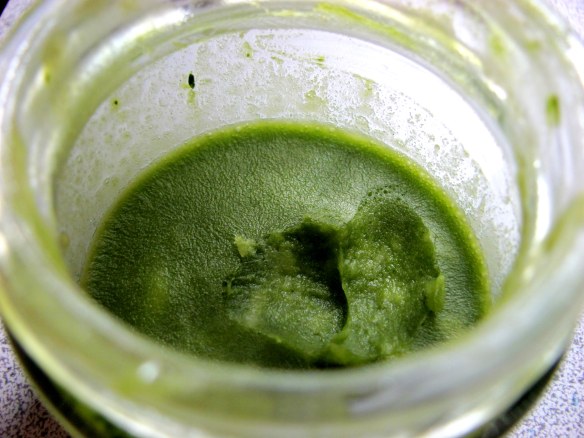
by Dr. Talia Marcheggiani, ND | Aug 2, 2013 | Beauty, Botanical Medicine, Health, Nature Cure, Recipes, Research, Self-care, Skin health, Women's health

Green tea, from the tea plant Camellia sinensis, with it’s metabolism-boosting, antioxidant and anticancer powers is now expanding its talents, entering into the world of skin care, especially acne treatments, and experiencing great success.
(more…)

by Dr. Talia Marcheggiani, ND | Jul 18, 2013 | Botanical Medicine, Clinical Science, Health, Nature, Nature Cure, Research

When I was very small, the tree at my parent’s house became sick and was cut down. I don’t exactly remember the great pine tree, but I remember it’s large, rotting stump, which was left as evidence of its towering existence on the lawn of our front yard. As a replacement, the city planted another tree in its place: a ginkgo tree.
What was once a disappointingly small, skinny sapling now towers over the two-story house, its trunk the diameter of my outstretched arms, an alarming reminder of the passage of time. I have always been fond of our ginkgo tree, with its delicate, fan-shaped leaves and its aire of exoticism, but I am developing an entirely new relationship with the plant as I begin to discover its array of clinical uses as well.
(more…)

by Dr. Talia Marcheggiani, ND | Oct 22, 2012 | Animals, Balance, Botanical Medicine, Colour, Exams, Exercise, Health, Mental Health, Nature, Nature Cure, Outdoors, Parks, Pets, Photography

October 19, 2012 ends another successful midterm week at CCNM. Not including our NPLEX 1 board exam, which was written in August, our first midterm week of 3rd year ticks a grand total of 61 CCNM exams off our growing lists.
(more…)
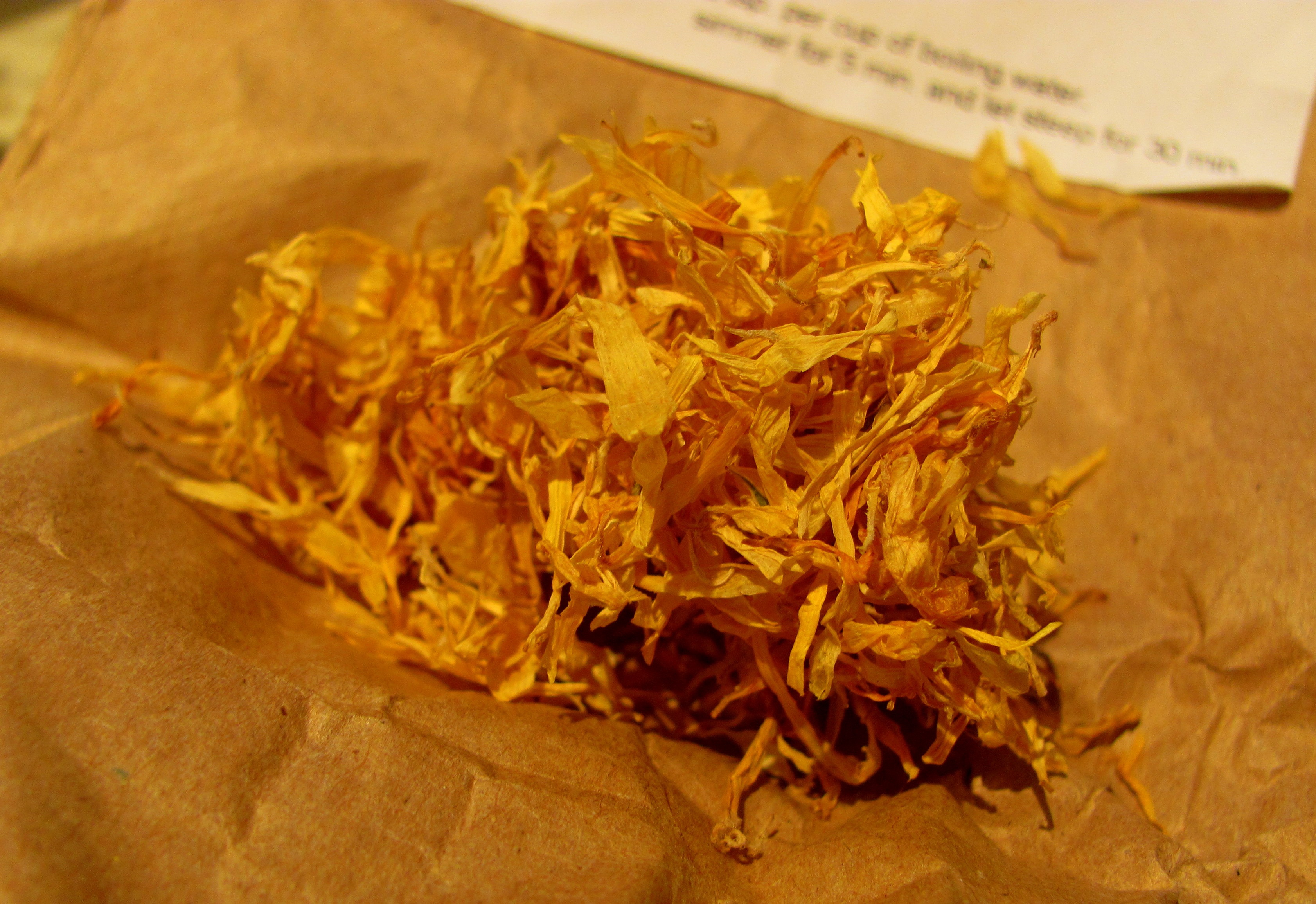
by Dr. Talia Marcheggiani, ND | Sep 19, 2012 | Botanical Medicine, DIY, Home Remedies, Photography, Self-care, Skin health

One of my favourite herbs to treat skin is calendula, or marigold. The bright orange petals from this pretty flower helps soothe and moisturize minor cuts, burns, bruises and scratches, helping to increase the speed of wound-healing and decrease infection. Calendula is also used to treat dermatitis or other itchy skin conditions, especially allergic conditions like poison ivy rash or bug bites, or can simply be used as a skin moisturizer, improving skin health and appearance.
(more…)

 This article is for informational purposes only.
This article is for informational purposes only. Unfortunately, we can’t draw any sound conclusions from Nelson’s experience; scientific data from randomized control studies is still lacking. However, the growing collection of anecdotes on the benefits of micro-dosing for mental health and well-being has caught the attention of researchers.
Unfortunately, we can’t draw any sound conclusions from Nelson’s experience; scientific data from randomized control studies is still lacking. However, the growing collection of anecdotes on the benefits of micro-dosing for mental health and well-being has caught the attention of researchers.














